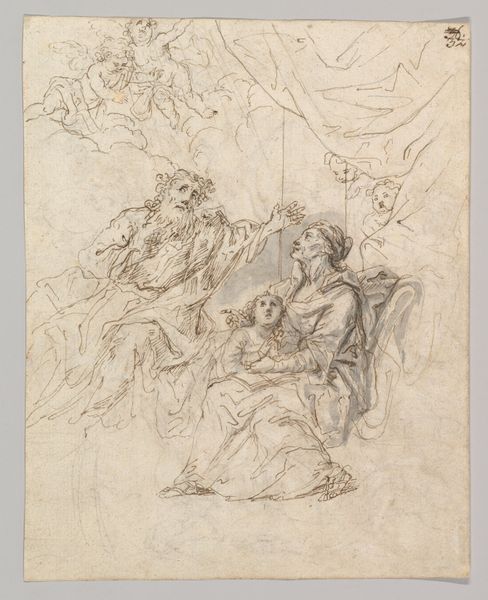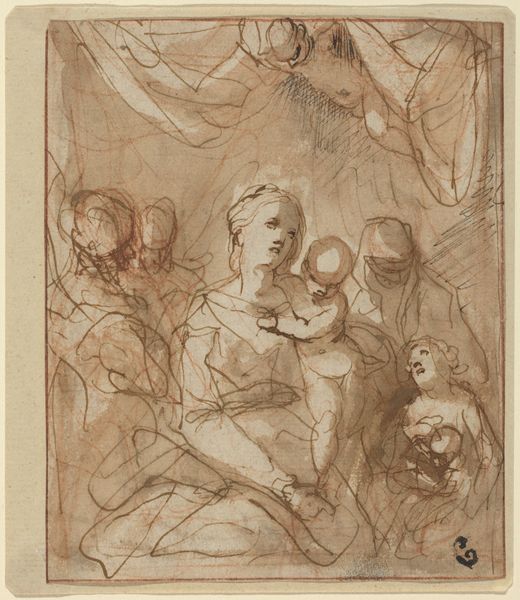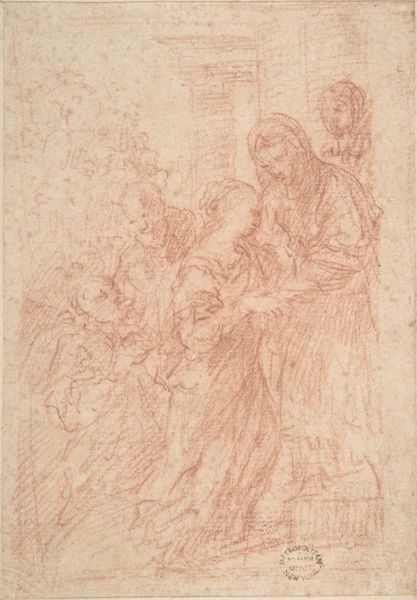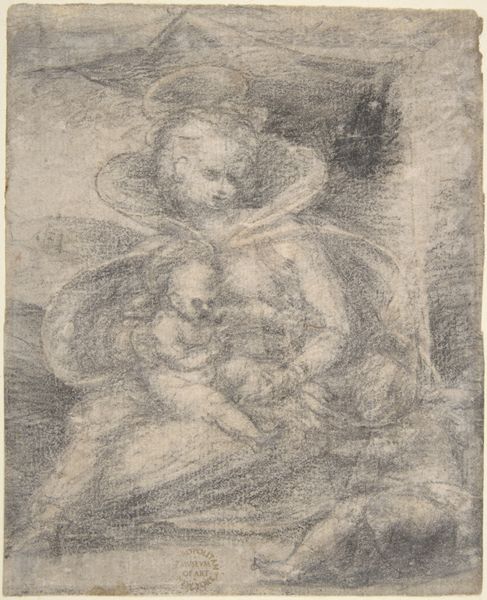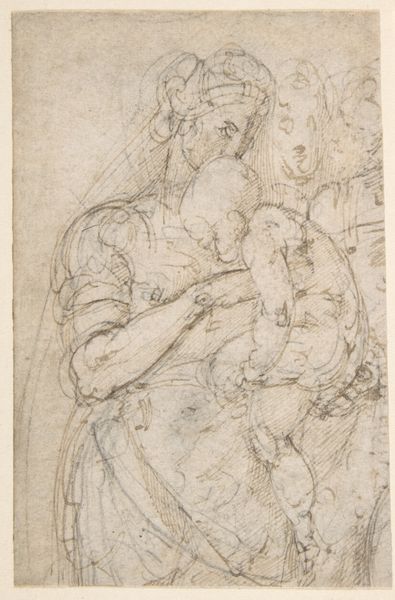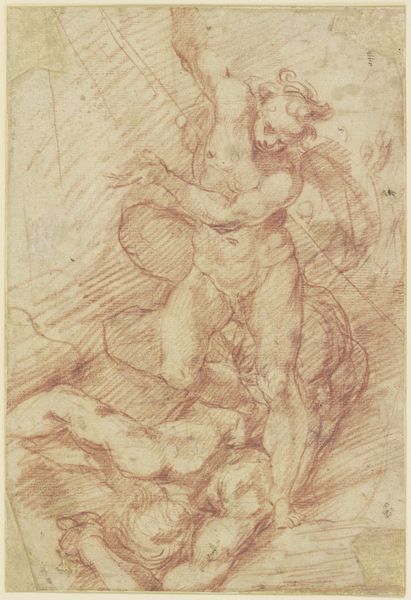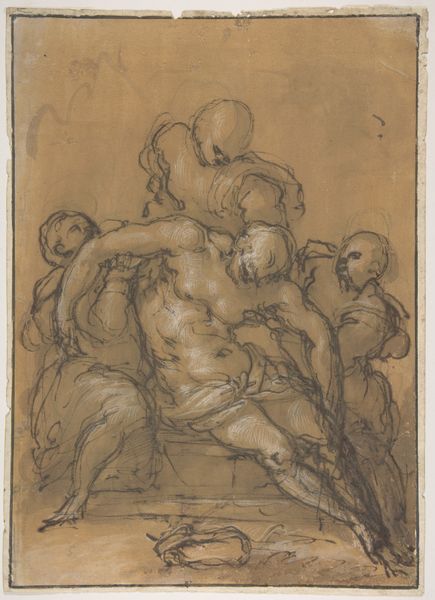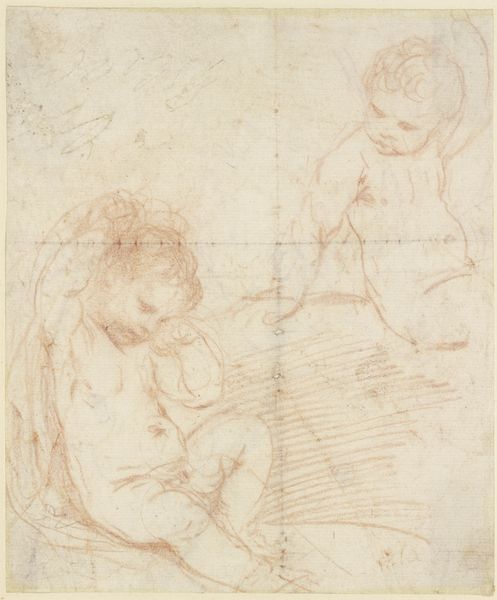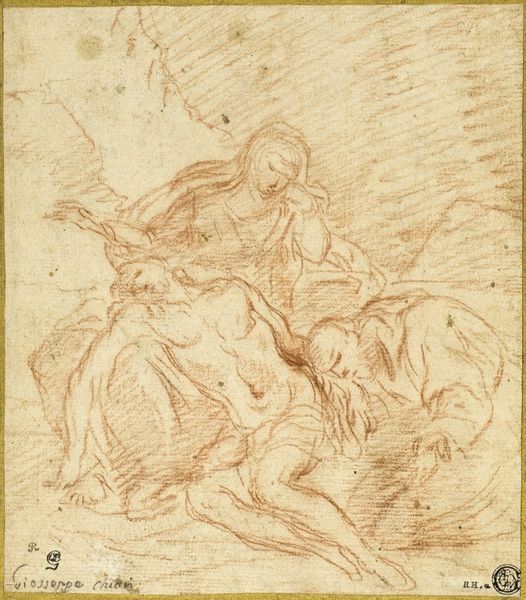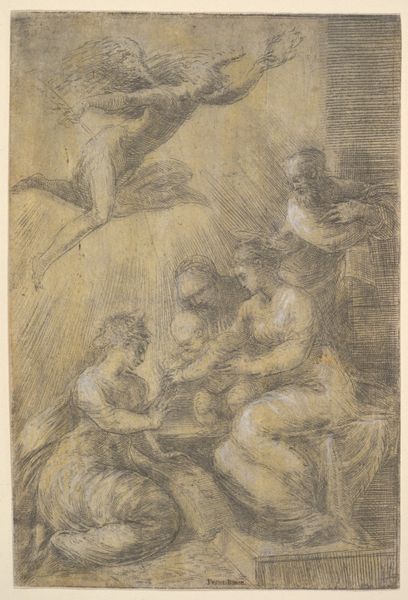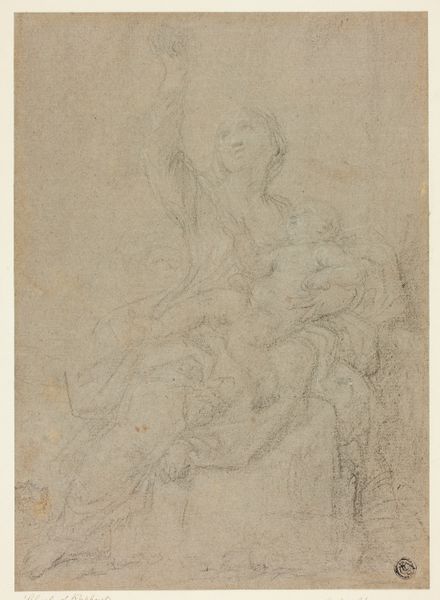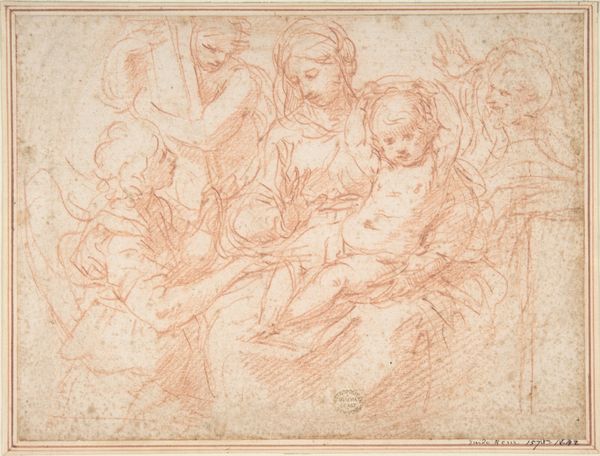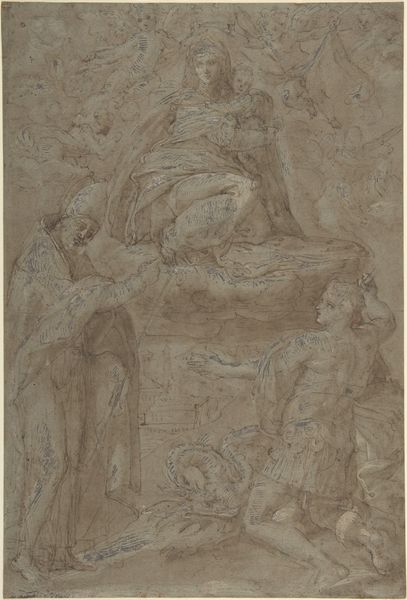
drawing, pencil, chalk
#
portrait
#
drawing
#
figuration
#
11_renaissance
#
pencil
#
chalk
Copyright: Public Domain
Curator: This intriguing drawing, housed at the Städel Museum, is titled "Holy Family with Kneeling Mary" by Ludovico Carracci. The medium seems to be a combination of chalk and pencil. What’s your initial impression? Editor: There's a delicacy to the sketchiness, the barely-there lines. It evokes a feeling of tenderness, a gentle portrayal. The composition, while not fully realized, feels intimate. The soft shading lends an ethereal quality to the scene. Curator: Carracci, part of a Bolognese family of artists, worked during a pivotal time in the late Renaissance and early Baroque periods. They reacted against mannerism. Their efforts to return to the naturalism and emotional accessibility that guided Carracci's religious paintings underscore the Counter-Reformation's demand for relatable, sincere imagery. Editor: It’s interesting you say that. Note how Mary’s gaze directs downward. There is a palpable humility in her lowered eyes and the overall muted tones further emphasize that sense of pious reflection that would surely resonate with religious audiences of that time. Curator: Precisely. While this appears to be a preparatory study, the composition reveals how artists actively constructed visual arguments to reinforce specific ideological positions and societal values. This, again, reflects the church reform efforts through art patronage and control of artistic expression during the late Renaissance. Editor: True, yet one also wonders how the dynamism within Carracci’s compositional studies translated from paper to fully realized oil on canvas! It shows the mechanics of art making, a look “behind the scenes” so to speak of art as labor in the workshop. The rapid strokes and almost frantic overlapping give an incredible energetic feel that almost contradicts the subject matter itself! Curator: That energetic feeling might reflect Carracci’s own intellectual grappling as he synthesized artistic ideals to fulfill certain ideological needs of patrons within a very complicated religious context. These rapid strokes become tangible evidence of those artistic struggles. Editor: An intense look then at faith, history and formal study all intertwined. I’ve come to appreciate Carracci’s efforts all the more! Curator: Indeed, and recognizing the multifaceted nature of art allows for a richer engagement and awareness with artworks that extends past art history itself.
Comments
No comments
Be the first to comment and join the conversation on the ultimate creative platform.
